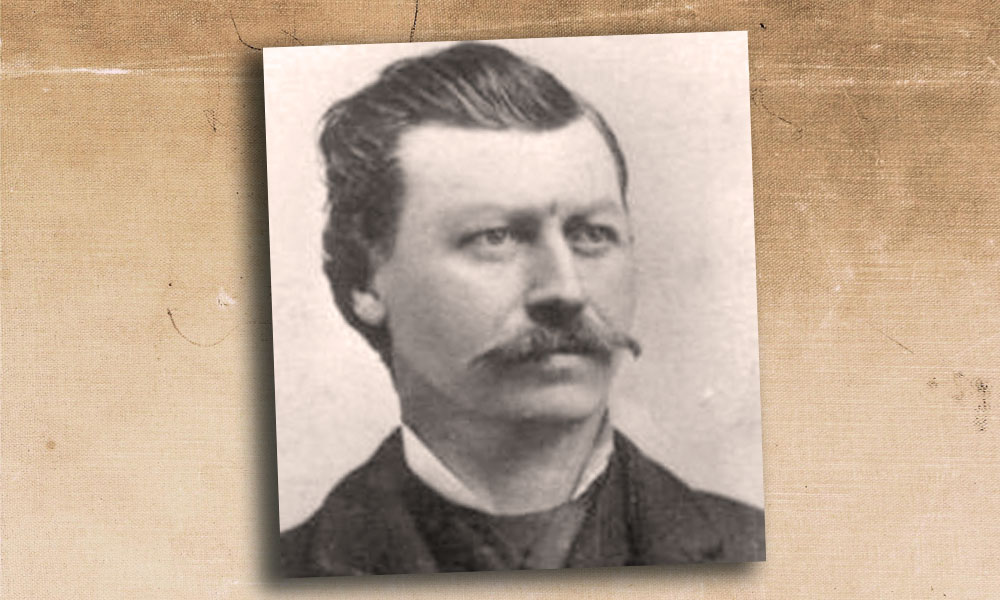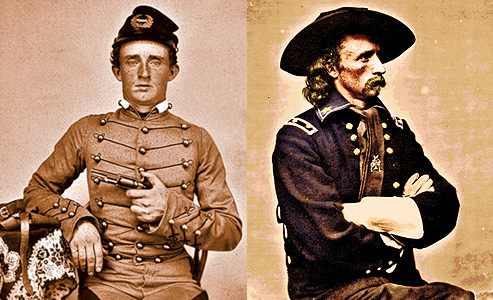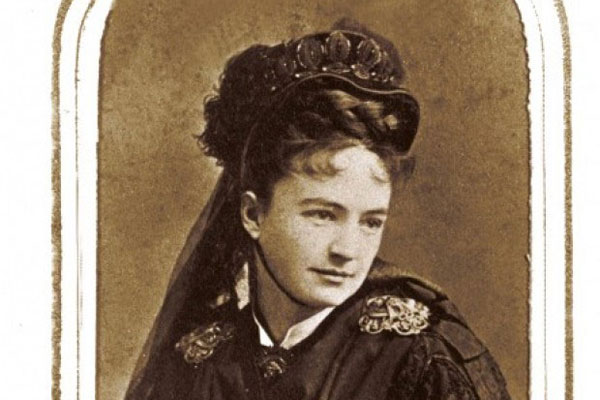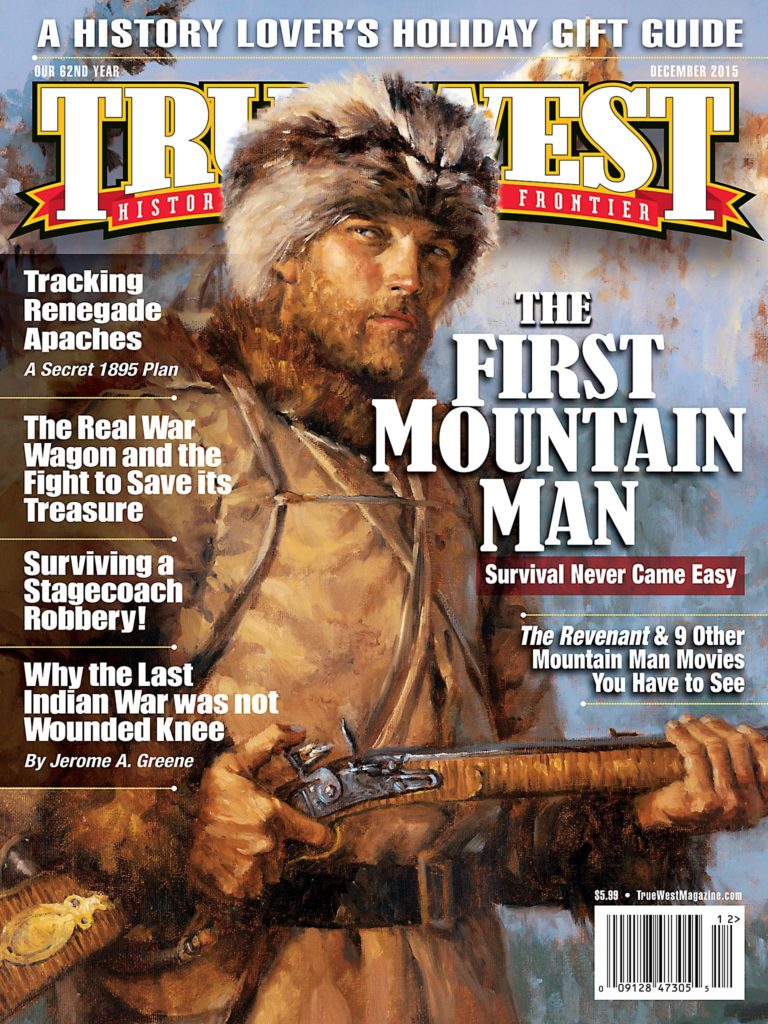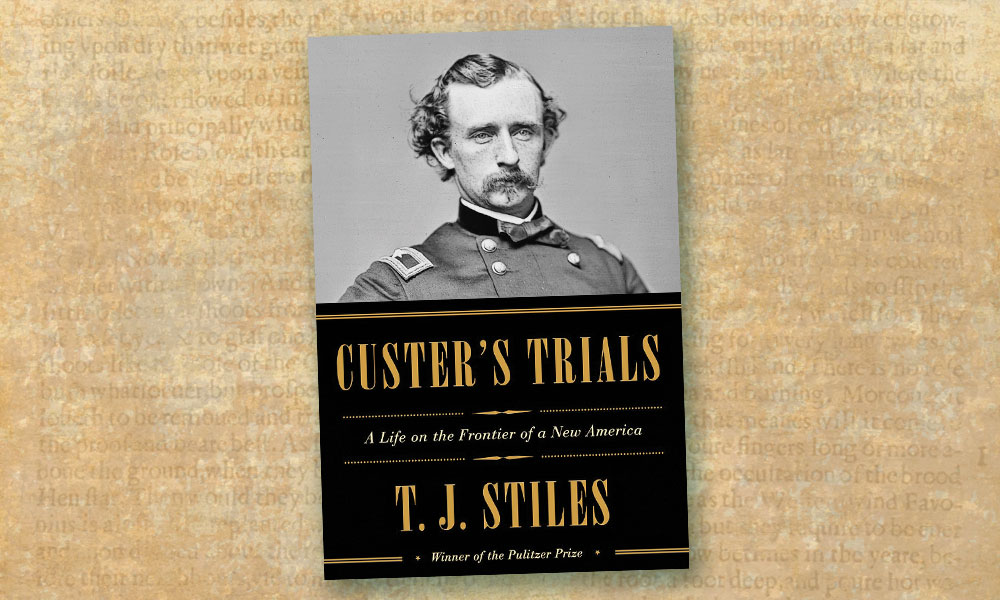
In his seminal 1950 work, Virgin Land: The American West as Symbol and Myth, Henry Nash Smith wrote, “The literary development of the Wild Western hero in the second half of the nineteenth century made the divergence between fact and fiction even greater.” Well over a half-century later, George Armstrong Custer’s life remains the literary subject of numerous historians and novelists, drawn to a legacy that is equally heroic and flawed, tragic, violent and, for many, even villainous. In fact, T.J. Stiles, the author of Custer’s Trials: A Life on the Frontier of a New America (Alfred A. Knopf, $30), acknowledges the challenge of interpreting the actions of a man who is “one of the best-documented and most-discussed individuals of the nineteenth century.”
So what makes the Pulitzer Prize-winning author Stiles’s biographical interpretation of Custer significantly different than other recent monographs, including Thom Hatch’s The Last Days of George Armstrong Custer: The True Story of the Battle of Little Bighorn (St. Martin’s, 2015) and James Robbins’s The Real Custer: From Boy General to Tragic Hero (Regnery, 2014)? Stiles’s biography of the boy-general from Michigan is an intimate history that attempts to peel back 175 years of “Wild Western hero” history, and place Custer’s life in the context of his frontier childhood, his violent and tumultuous military life and, most notably, his family life, his relationships with women, and his narcissistic relationship with politics and fame. As Stiles notes so poignantly: “The violence that suffused his life shadows ours. The ambivalence of his contemporaries is our ambivalence—toward our time as well as theirs. Custer’s story begins with its ending, and it never ends.”
In his 1983 essay titled “The American Indian from the Civil War to the Present,” historian Robert Carriker wrote: “No event in the Indian Wars of the United States has attracted more public interest than the Little Big Horn defeat. The personal animosity between Custerphiles and Custerphobes has long colored the literature of this battle. Every facet of Custer’s movements and intentions, the Indian tactics, and the blame for the events that followed have been examined repeatedly. Regardless of one’s opinion regarding George Armstrong Custer, it should be recognized that this event is a landmark in the history of Indian-white relations.”
Three decades and dozens of Custer/Little Big Horn articles, biographies, academic and popular monographs and syntheses later, Stiles’s work will stand as a singular benchmark in Custer historiography for its interpretations of the general’s professional and personal challenges in the context of 19th-century political, racial, military, gender and family stories. Stiles’s complex analysis of Custer’s life enriches our understanding of events and topics still debated in the 21st century, including icons and heroes of American popular culture. In fact, the true hero of Stiles’s Custer’s Trials is not the iconic general, whom the author describes as “individualistic, romantic and impulsive,” but the survivors, Elizabeth Bacon Custer and Eliza Brown Davison, heroines of war and peace.
—Stuart Rosebrook


